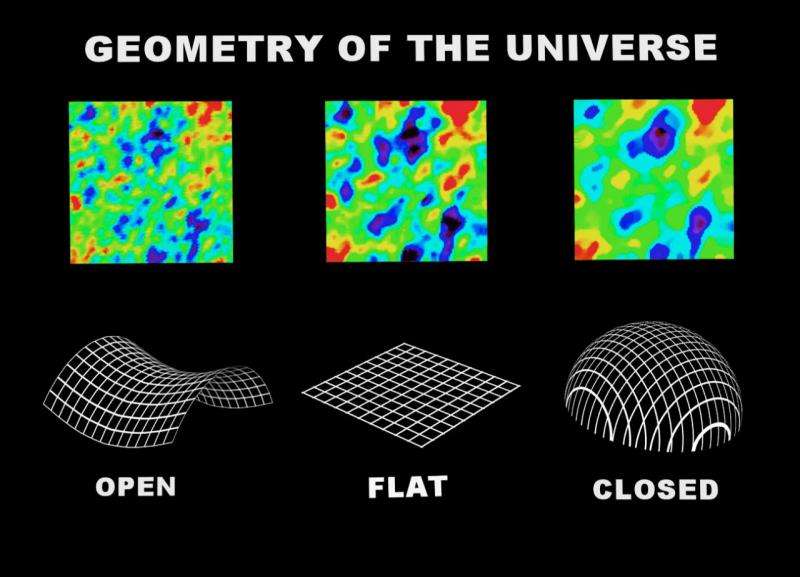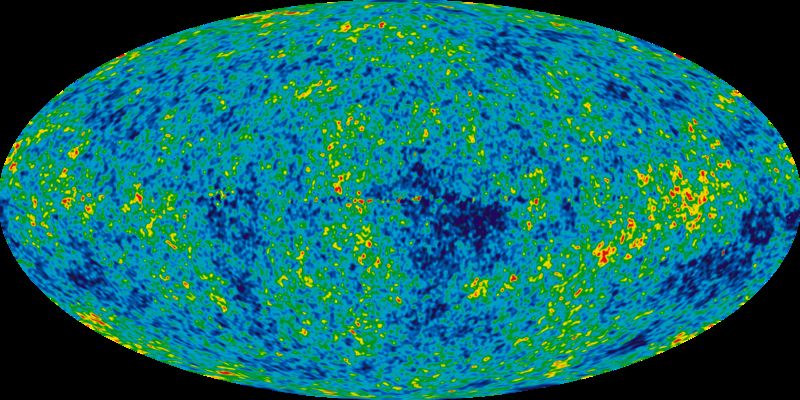What shape is the universe?

The universe. It's the only home we've ever known. Thanks to its intrinsic physical laws, the known constants of nature, and the heavy-metal-spewing fireballs known as supernovae we are little tiny beings held fast to a spinning ball of rock in a distant corner of space and time.
Doesn't it seem a little rude not to know much about the universe itself? For instance, if we could look at it from outside, what would we see? A vast blackness? A sea of bubbles? Snow globe? Rat maze? A marble in the hands of a larger-dimensional aliens or some other prog rock album cover?
As it turns out, the answer is both simpler and weirder than all those options. The shape of the universe is a question we love to guess at as a species and make up all kinds of nonsense.
Hindu texts describe the universe as a cosmic egg, the Jains believed it was human-shaped. The Greek Stoics saw the universe as a single island floating in an otherwise infinite void, while Aristotle believed it was made up of a finite series of concentric spheres, or perhaps it's simply "turtles all the way down".
Thanks to the mathematical genius of Einstein, cosmologists can actually test out the validity of various models that describe the universe's shape, turtles, mazes, and otherwise.
There are three main flavors that scientists consider: positively curved, negatively curved, and flat. We know it exists in at least four dimensions, so any of the shapes we are about to describe are bordering on Lovecraftian madness geometry, so fire up your madness abacus. Ya! Ya! Cthulhu ftagen.
A positively curved universe would look somewhat like a four-dimensional sphere. This type of universe would be finite in space, but with no discernible edge. In fact, two distant particles travelling in two straight lines would actually intersect before ending up back where they started.
You can try this at home. Grab a balloon and draw a straight line with a sharpie. Your line eventually meets its starting point. A second line starting on the opposite side of the balloon will do the same thing, and it will cross your first line before meeting itself again.
This type of universe, conveniently easy to imagine in three dimensions, would only arise if the cosmos contained a certain, large amount of energy.
To be positively curved, or closed, the universe would first have to stop expanding – something that would only happen if the cosmos housed enough energy to give gravity the leading edge. Present cosmological observations suggest that the universe should expand forever. So, for now, we're tossing out the easy to imagine scenario.
A negatively curved universe would look like a four-dimensional saddle. Open, without boundaries in space or time. It would contain too little energy to ever stop expanding.
Here two particles traveling on straight paths would never meet. In fact, they would continuously diverge, getting farther and farther away from each other as infinite time spiraled on.
If the universe is found to contain a Goldilocks-specific, critical amount of energy, teetering perilously between the extremes, its expansion will halt after an infinite amount of time,
This type of universe is called a flat universe. Particles in a flat cosmos continue on their merry way in parallel straight paths, never to meet, but never to diverge either.
Sphere, saddle, flat plane. Those are pretty easily to picture. There are other options too – like a soccer ball, a doughnut, or a trumpet.
A soccer ball would look much like a spherical universe, but one with a very particular signature – a sort of hall of mirrors imprinted on the cosmic microwave background.
The doughnut is technically a flat universe, but one that is connected in multiple places. Some scientists believe that large warm and cool spots in the CMB could actually be evidence for this kind of tasty topology.
Lastly, we come to the trumpet. This is another way to visualize a negatively curved cosmos: like a saddle curled into a long tube, with one very flared end and one very narrow end. Someone in the narrow end would find their cosmos to be so cramped, it only had two dimensions. Meanwhile, someone else in the flared end could only travel so far before they found themselves inexplicably turned around and flying the other way.
So which is it? Is our universe an orange or a bagel? Is it Pringles? A cheese slice? Brass or woodwind? Scientists have not yet ruled out the more wacky, negatively curved suggestions, such as the saddle or the trumpet.

Haters are going to argue that we will never know what the true shape of our universe is. Those people are no fun, and are just obstructionists. Seriously, let us help you get better friends.
Based on the most recent Planck data, released in February 2015, our universe is most likely… flat. Infinitely finite, not curved even a little bit, with an exact, critical amount of energy supplied by dark matter and dark energy.
I know this gets a little confusing, and meanders right up to the border of nap time, but here's what I'm hoping you'll take away from all this.
It's amazing that not only can we make guesses at what our incredible universe looks like, but that there's clever people working tirelessly to help us figure that out. It's one of the things that makes me happiest about talking every week about space and astronomy. I just can't wait to see what's next.
So what do you think? Is a flat universe too boring for your taste? What shape would you like the universe to be, given the wide array of options?
Thanks for watching! Never miss an episode by clicking subscribe.
Our Patreon community is the reason these shows happen. We'd like to thank Fred Manzella, Todd Sanders, and the rest of the members who support us in making great space and astronomy content. Members get advance access to episodes, extras, contests, and other shenanigans with Jay, myself and the rest of the team.
Source: Universe Today




















